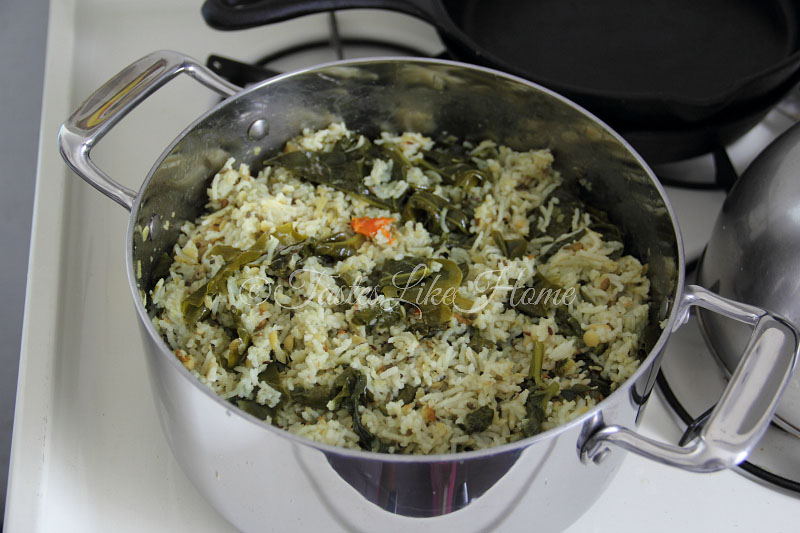What’s Cooking is a series in which I answer questions and share advice about food and cooking that you may have but are too shy to ask.
One of the most efficient uses of your time in the kitchen when cooking is to keep a kettle of boiling water at hand. Not only does the heated water cut down on cooking time, it also ensures that your food is not over-cooked, or waterlogged, ensuring that the texture when cooked is just right.
For the purposes of this column, the cooking liquids referred to will be water, stock and coconut milk.
Has this ever happened to you – you’re cooking a stew or curry and the gravy dries down quicker than you like but the meat is far from being cooked? Or, you’ve been steaming something and the water in the pot/pan dries out before the food is done steaming? What about the dhal being too thick and you need to adjust the consistency before you chunkay? Or what about the boiling of rice that needs more water because the grains are still hard? Sounds familiar right? We’ve all been there.
Here’s the main reason why it is a good practice to have your cooking liquids heated when making certain dishes – it maintains the cooking of your already hot cooking food, and does not cause the ingredients to breakdown to such a state that ultimately alters the texture through a lengthened cooking time. The prolonged cooking time – the period when the pot is quieted and cooled from the addition of cool liquids – is when the ingredients take on more liquid as the pot waits to come back to a boil. This extended cooking time can also change the flavour of your food, depending on what you are cooking. For example, if you are working from a recipe and you are not very comfortable in the kitchen, you may find that the meat, vegetable, or legume has reached the specified texture but there is still a lot of liquid in the pan. Unsure of yourself, you shut off the heat, because, well, the main ingredient is done cooking, but unbeknownst to you, all the flavour is left in the soupy sauce. You eat your meat or whatever and it is bland.

If the above ever happens to you, here’s how to salvage the dish. Use a slotted spoon – pot spoon with holes or openings – and remove the meat, vegetables, fish, or beans/peas and set aside in a platter or bowl and cover to keep warm. Raise the heat to high and let the liquid cook down to the recipe-specified or to your desired consistency. Now add back the ingredients, and let it heat through in the sauce.
When heating the cooking liquids, here is what is recommended:
- Water – bring to a boil.
- Stock – bring to a simmer, this is the stage just before boil. The reason for not boiling the stock is that you do not want to concentrate the flavour and you want to maintain the quantity required to cook the dish you are making.
- Coconut milk – heat very hot, almost to a simmer. Do not let it boil as this can result in curds developing and oil separating.
Once the cooking liquids are heated, keep them hot on the stove with the heat turned off, or on very low heat. Do not heat the liquids long before they are needed which would result in them cooling down before being added to the pot. Heat them at least 10 minutes before you are ready to use them. Of course this time would vary depending on the quantity being heated and the level of heat used.
So the next time…
…You are boiling rice and the water dries down, top it up with boiling water.
…You are making Cook-up Rice or Pelau, add hot coconut milk along with the rice etc.
…You are making risotto, add simmering stock at each stage of cooking as indicated in the recipe.
…You are steaming dumplings, custards etc and the water is very low in the pan/pot but the cooking is not done, remove the steamer and fill up with boiling water and then return steamer to pot/pan.
…You are making rice and peas, add the boiled/heated water, stock or coconut milk along with the rice
…You are making rice kheer/sweet rice/rice pudding or vermicelli payasam/pudding and the mixture is too thick, loosen it with heated milk
…You are making a curry or stew and it is time to add the liquid to cook and make a gravy, add boiled water or hot coconut milk depending on your preference.
…You are making Mettagee and the coconut milk had reduced but the ground provisions need a little more cooking, add heated coconut milk.
I think you get the idea.
Happy cooking!
Cynthia










